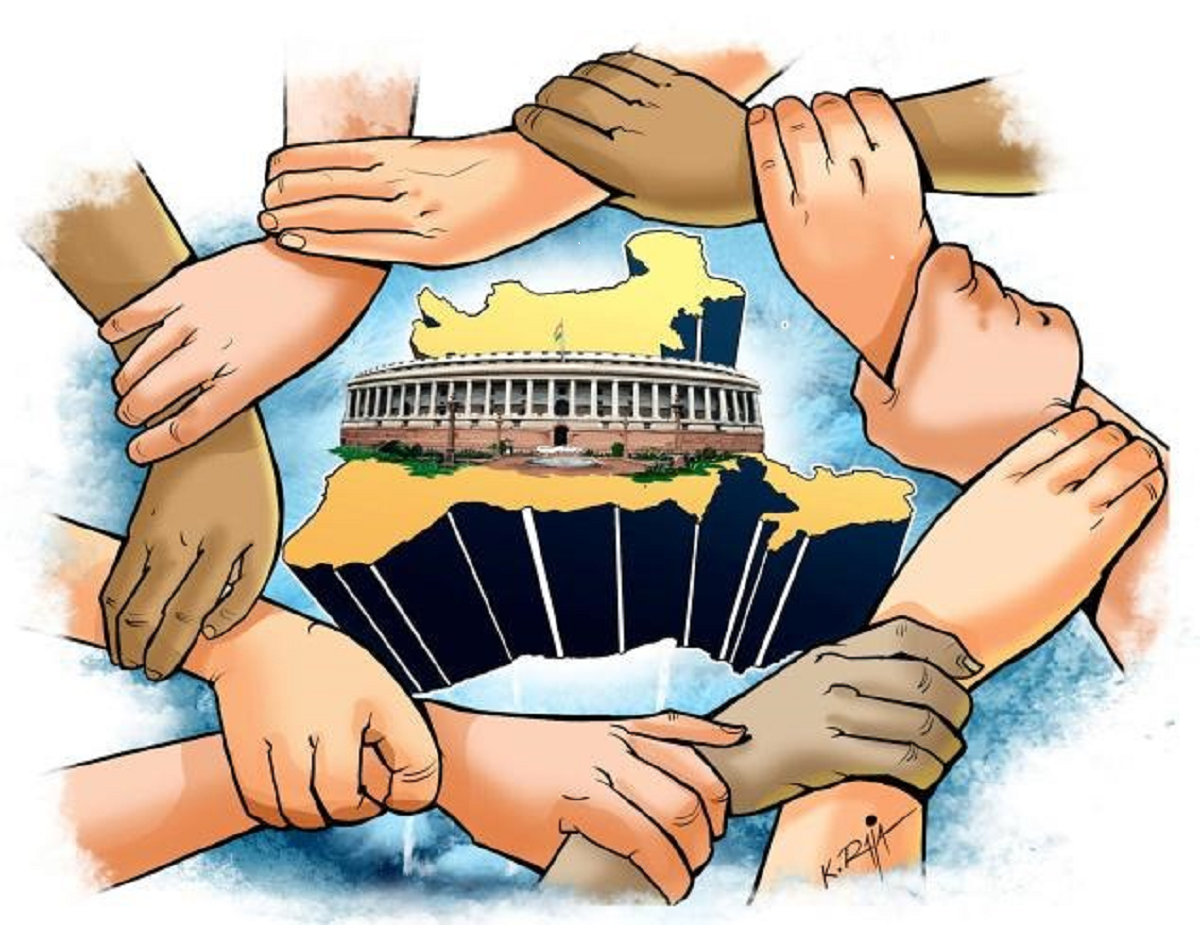Trigger Warning: mentions of death, mental health issues
“Grief is a most peculiar thing; we’re so helpless in the face of it. It’s like a window that will simply open of its own accord. The room grows cold, and we can do nothing but shiver. But it opens a little less each time, and a little less; and one day we wonder what has become of it.”
― Arthur Golden, Memoirs of a Geisha
Death is inevitable. Ultimate. Irreversible. As the fundamental truth of life, we are bound to encounter death. Unfortunately, to grieve is a matter of privilege; to allow yourself the time to break down and build back up again is a luxury not many can afford. In the past, people have returned to the workplace after demises, pushing against the inner storm of despair. Barring the few designated days of mourning, grief never became a strong reason for seeking paid leave, thereby, forcing employees to resume work within days of such life-altering tragedies.
New Zealand recently became the second country to implement miscarriage bereavement laws — granting women and men the right to paid leave after miscarriages and stillbirths. India already had a similar legislation in place that entitled women to a six-week paid leave under the Maternity Benefit Act, 1961, in such cases. These governments have recognised the soul-crushing pain experienced by parents by passing such legislation. Hence, these acts are symbols of our humanity; our understanding of life and loss.
While they are certainly socially evolved and humane, given their intrinsic link to the labour market, these laws provoke questions about their economic impacts. The impact of grief on productivity and employment raises some important questions: What are the economic consequences of paid leaves? Is grief a good enough reason for granting days off work?
Productivity Pause
Grief is more than just a fleeting emotional state — it is the source of psychological and physical stress that can range from depression to anxiety and hopelessness. In fact, a medical side effect of bereavement is an impaired immune system. Since mental and physical health are integral parts of human capital, when emotions and grief run wild, productivity takes a severe hit.
Despite realising their inability to work, workers feel the pressures of presenteeism. If you have ever been to work even though you did not feel up to it, you understand presenteeism. A recently studied phenomenon, it refers to employees still habitually working long hours/attending work even though they are not fully functioning well (mostly due to medical reasons and even other concerns) ultimately leading to lower productivity. Workers who are insecure about their jobs often display presenteeism.
Presenteeism is harming businesses as the illusion of efficiency prevents managers from planning better. When six workers are on the job but two are working at reduced capacity, information asymmetry prevents the manager/owner from efficiently allocating the workload because presenteeism is not apparent. Hence, the quality of output suffers and average efficiency is dragged down. In contrast, if the unproductive workers were on leave, the reduction in team size and efficiency would be glaringly visible and the managers would be able to better plan the tasks knowing fully well that they are working with a smaller, but productive team.
Given that long bereavement breaks are not normalised, and their medical impacts are not understood, many workers feel insecure about their job status while considering taking time off work. Hence, employees are ultimately faced with the unfair choice of either resuming work with a diminished ability to perform or quitting the labour force.
Workers deciding to quit the labour force would imply forgoing a source of income. The absence of financial stability can further reinforce any depression or anxiety felt by the employees. They might also lose out on new skills by being out of work for long periods which, in turn, would reduce their human capital relative to the rest of the workforce. With lower human capital, their employment prospects would further decrease. These consequences for workers translate into bigger problems for the economy as unemployment leads to wastage of resources and lower economic output.
In this lose-lose situation, data estimates the economic cost of bereavement in the UK workplaces to be nearly £23bn a year. This renders a loss in tax revenue estimated to be around £8bn a year. Behind these massive figures, the study indicates that “the majority of the economic cost arises from lost productivity in the workplace (presenteeism), rather than from time away from work.”
A viable solution?
Neither declining productivity nor workers’ exits from the labour force are optimal cases for the economy. Therefore, a solution would include retaining workers or preventing productivity dips. By providing paid bereavement leaves, firms ensure that workers have the option of staying employed. In a way, paid leave lifts the pressure of ‘showing up’ at work and allows workers to recuperate emotionally without worrying about economic welfare and finances. Once workers do finally return to work, they are relatively more emotionally stable and will be able to perform better, preventing any problems caused by presenteeism. Paid leaves also foster a stronger attachment to the labour force with workers more committed to working and staying in employment. With a more dedicated and stronger labour force, the national output is expected to increase.
Understanding the merits of paid leaves, the miscarriage bereavement laws passed by the New Zealand government are a giant leap forward. They recognise the significant emotional implications of stillbirths and miscarriages — losing a child has been ‘classified as one of the most extreme stressors a human can face’ which causes the parents’ productivity to reduce to a quarter of what it was before. Most importantly, these laws standardise access to paid-leave and propagate equality. Given that all workers do not have the financial background to quit their jobs, the legislation ensures that despite varied working conditions, workers have the ability to avail the option of paid leaves. Hence, it fosters an environment of equality while prioritising workers’ welfare.
At its core, such laws recognise that workers’ welfare need not be at odds with the economic well-being of the country. Workers are 13% more productive when they are happy. Hence, it is difficult to isolate economic growth from the emotional welfare of the workforce. By providing adequate time and opportunity for employees to process their loss, these paid leaves act as a safeguard for the interests of the workforce against the tragedies of miscarriages and stillbirths.
Picture Perfect?
Despite their merits, these laws come with strings attached. Paid leave is a controversial issue amongst employers since they are paying the employees for essentially no work. Some firms might prefer workers showing up at offices despite the recent deaths of loved ones. By availing paid leaves, a worker’s contribution to output is zero. By using the logic of ‘something is better than nothing,’ employers would still prefer to enforce their older methods.
Paid leaves for parents after stillbirths or miscarriages are certainly a social issue. However, the effects of grief on productivity make it an economic issue in tandem. This gives the opportunity for inclusive legislation that can improve economic conditions and boost economic growth. The unpredictability of death makes it all the more important to recognise the various losses humankind shares and subsequently address them in legislation. Because let’s face it, for someone still reeling from the shocks of the death of their loved ones; for someone still braving that gush of grief blowing through the window in that frigid room; even a few days off work mean everything.
Advaita Singh is a second-year student of Economics at Ashoka University. She is also the President of the Economics Society at Ashoka.
We publish all articles under a Creative Commons Attribution-Noderivatives license. This means any news organisation, blog, website, newspaper or newsletter can republish our pieces for free, provided they attribute the original source (OpenAxis).










